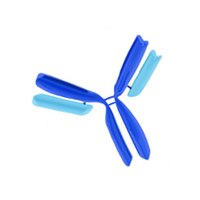IM31L Sigma-AldrichAnti-PAI-1 Mouse mAb (7)
This Anti-PAI-1 Mouse mAb (7) is validated for use in Immunoblotting, Immunoprecipitation for the detection of PAI-1.
More>> This Anti-PAI-1 Mouse mAb (7) is validated for use in Immunoblotting, Immunoprecipitation for the detection of PAI-1. Less<<Synonyms: Anti-Plasminogen Activator Inhibitor-1
Recommended Products
Overview
| Replacement Information |
|---|
Key Spec Table
| Species Reactivity | Host | Antibody Type |
|---|---|---|
| H | M | Monoclonal Antibody |
| Physicochemical Information |
|---|
| Dimensions |
|---|
| Materials Information |
|---|
| Toxicological Information |
|---|
| Safety Information according to GHS |
|---|
| Safety Information |
|---|
| Product Usage Statements |
|---|
| Packaging Information |
|---|
| Transport Information |
|---|
| Supplemental Information |
|---|
| Specifications |
|---|
| Global Trade Item Number | |
|---|---|
| Catalogue Number | GTIN |
| IM31L | 0 |
Documentation
Anti-PAI-1 Mouse mAb (7) SDS
| Title |
|---|
Anti-PAI-1 Mouse mAb (7) Certificates of Analysis
| Title | Lot Number |
|---|---|
| IM31L |
References
| Reference overview |
|---|
| Janicke, F., et al. 1994. Cancer Research. 54, 2527. Lawrence, D. A., et al. 1994. J. Biol. Chem. 269, 15223. Nagayama, M., et al. 1994. Cancer 73, 1398. Petersen, H., et al. 1994. Cancer Res. 54, 120. Keijer, J., et al. 1991. Blood 78, 401. Blasi, F. and Verde, P., 1990. in Seminars in Cancer Biol. Vol. 1, 153. Declerck, P. J. and Collen, D., 1990. Thrombosis Res. Supplement X 3. |







